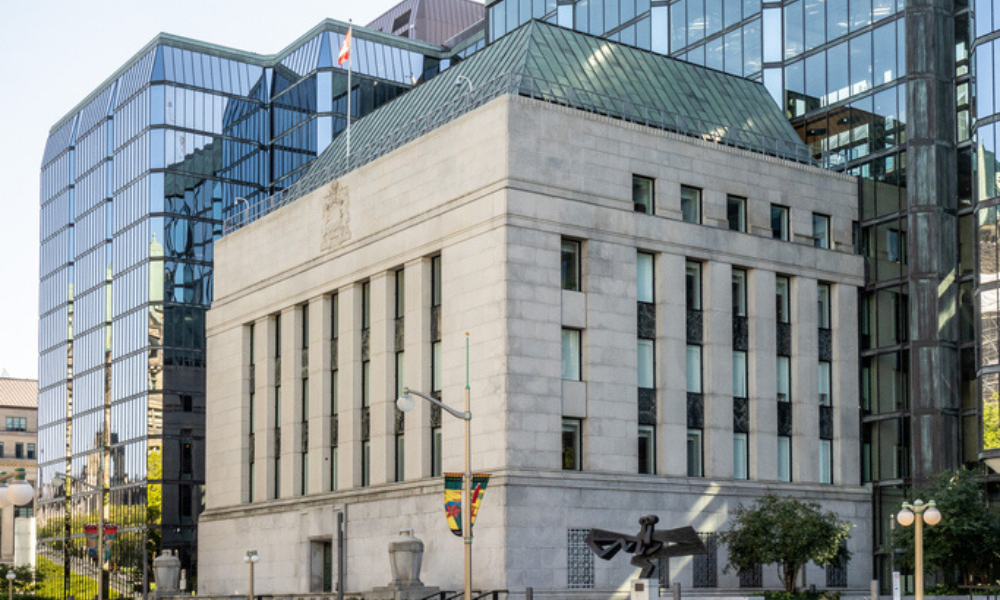Governor hints at more aggressive action on rates

The Bank of Canada may need to cut interest rates more aggressively if the country’s economy takes a turn for the worse, Governor Tiff Macklem said.
Speaking on growing concerns around a cooling job market, falling oil prices, and slowing immigration, Macklem hinted at the possibility of bigger rate cuts than previously anticipated.
In a recent interview with the Financial Times, Macklem acknowledged that the central bank could shift to larger reductions, possibly up to 50 basis points at a time – double the current pace – if the economy underperforms.
If growth falls short of expectation, “it could be appropriate to move faster [on] interest rates,” Macklem said. He said there was “enough slack in the [Canadian] economy to bring inflation back down to target”.
“We don’t want to see more slack,” Macklem added.
Red flags
Canada's labour market has shown signs of strain in recent months, with unemployment jumping to 6.6% in August from a low of 4.8% in 2022. This rise in joblessness has been sharper than in the US, where unemployment has increased only modestly to 4.2% from 3.4% during the same period.
Macklem expressed concern about the weakness in Canada’s job market, pointing to lower hiring rates and job vacancies that have fallen below pre-pandemic levels. In contrast, the US labour market has held up more robustly, with stronger demand for workers.
The energy sector, another pillar of Canada’s economy, has also been hit by falling oil prices in recent weeks. Though Canadian oil producers are accustomed to volatile price swings, Macklem admitted that a "really sharp cycle" in prices could "have a big impact" on the overall economy.
Inflation easing, but risks remain
The Bank of Canada has already lowered its key interest rate three times since June, bringing it down to 4.25% from a high of 5%. These cuts have helped cool inflation, which now sits at 2.5% — close to the central bank’s target of 2%.
The risk of inflation falling below target would be another reason to cut rates by more than originally planned, according to Macklem.
“As you get closer to the [inflation] target, your risk management calculus changes,” he said in the interview with FT. “You become more concerned about the downside risks. And the labour market is pointing to some downside risks.”
While the central bank has not yet committed to a faster pace of cuts, Macklem highlighted that ongoing risks, such as high shelter costs and rent prices, are being monitored closely. The Canadian rental market in particular has been squeezed by supply shortages and a surge in immigration, with rents rising nearly 9% year-on-year as of July.
Macklem expressed hope that rent inflation would eventually ease, but he acknowledged "that could take some time."
The Bank of Canada is forecasting modest growth of 2% in 2024, but if the economy falls short of expectations, more aggressive action may be needed to prevent a downturn.
Global context
The prospect of larger rate cuts in Canada comes as the US Federal Reserve is expected to lower its interest rates for the first time in over four years. The Fed’s benchmark rate currently sits in the range of 5.25% to 5.5%, the highest it’s been in decades.
One of the most surprising post-pandemic challenges for Canada has been weak productivity growth, which has lagged behind the US.
"What we thought was that as those supply chain disruptions are worked out… new workers get trained, you should see some pick-up in productivity growth," Macklem said. "That is not what happened in Canada, and in fact it’s not what’s happened in the UK. It’s not what’s happened in Europe."
However, unlike Canada, the US has experienced a more gradual cooling of its labour market and economy.
"We’re closely watching these developments," Macklem said, hinting that policymakers are ready to adjust course if conditions demand it.
Read next: CIBC gives verdict on when Bank of Canada will start jumbo cuts
The economic outlook has also been influenced by high levels of immigration. Canada added approximately 500,000 immigrants in 2023, but the federal government recently announced plans to reduce the number of temporary foreign workers, which could have both positive and negative impacts. While lower immigration may reduce pressure on the rental market, it could also weigh on economic growth.
Macklem said he hopes that easing borrowing costs will help offset any slowdown caused by reduced immigration.
"Our expectation is you’re going to start to see per capita consumption coming up," he said, pointing to improved consumer demand as interest rates come down.
Make sure to get all the latest news to your inbox on Canada’s mortgage and housing markets by signing up for our free daily newsletter here.



